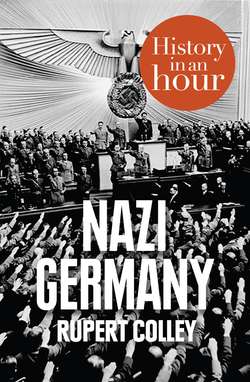Читать книгу Nazi Germany: History in an Hour - Rupert Colley - Страница 9
ОглавлениеThe Nazi Manifesto: A Thousand Years
In February 1920 the party drew up its manifesto which, among its twenty-five points, demanded the union of all Germans into a greater Germany, and called for an expansion of living space to accommodate the growth of the German race. This space, Lebensraum, was to be found in the east at the expense of the Slavic races, who would, according to the party, be simply evicted.
The manifesto rejected the Treaty of Versailles – Germany needed to find her pride again and to rid the nation of the traitors who had so meekly accepted the peace of 1919. Hitler would lead such a Germany, a Third Reich that would reign for a thousand years.
The Jew, the source of German humiliation, was not and could not, stated the manifesto, be German. The manifesto maintained within its nationalist and anti-Semitic principles ones that were socialist in nature, designed to broaden its appeal to the German workers.
Nazism relied on the use of symbols – the swastika, which although far from new, was already identified with the Nazis, and, fifteen years later, in September 1935, was officially adopted as the national flag of Germany alongside a black, red and white tricolour. In September 1935, the flag of the Nazi Party was established as the. In Mein Kampf Hitler wrote about the colours of the flag: ‘In the red we see the social idea of the movement; in the white, the nationalist idea and in the swastika the vision of the struggle for the victory of the Aryan man.’
